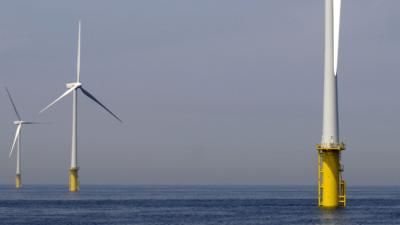
Discovering Safety and Safetytech Accelerator receive government funding
Discovering Safety and Safetytech Accelerator have been awarded Government funding for new project ‘Enabling Innovation in Industrial SafetyTECH’.
This page is approximately a 5 minute read
This page was published on

In the past, predictions for the future of the energy sector have been more reliable than those for many other areas of infrastructure. For all the dynamism and global importance, investors knew how much oil was in the ground or how long a power station would be viable, and they often invested based on 20+ year timescales.
Today, that longer-term picture is far more complex because so much is happening… and fast. A diverse, distributed energy world is emerging with a much wider range of energy generation projects around the world. The big power stations are still with us, but thrown into the mix are solar, wind, hydro, many small-scale and local energy-generation systems, and complex energy management systems that hold these together.
To illustrate the pace of this change, Shell engineer Lucy Ferguson thinks that while her eldest daughter, 15, will learn to drive in a petrol car, her youngest son, 9, will likely only drive electric. “There’s just six years between them, and that’s just one example of the pace of change we can all expect. Energy has always been an incredibly dynamic sector, and today it is more so than ever.”
Shell’s activities are mirroring this transformation, from delivering petrol via the garage forecourt to becoming ‘one of the world’s leading energy companies.’ The Ferguson home is powered by 100% renewable electricity supplied by Shell Energy’s domestic service.
As Global Discipline Head of Mechanical Engineering, Lucy is involved in energy infrastructure projects around the world and her view of the future is that it will see incredibly varied energy generation delivered through collaboration between different firms and sectors.
“Collaboration is essential, no one organisation is going to solve the challenges of the energy transition,” she says. “And in addition to those partnerships, we need a diversity of power generation from solar and wind to water, biofuels and hydrogen. Creating a mix of energy sources will be essential in achieving continuity of supply while also cutting carbon production.”
Lucy trained as a mechanical engineer, then worked in refining, onshore and offshore, operations, maintenance, and decommissioning. “The industry is constantly evolving, there’s never a shortage of innovation, with the focus now on unleashing an affordable and low-carbon future for all”.
Energy generation is no longer a commodity. With different countries at varying stages on their journey to decarbonisation, many energy projects are highly inventive and designed to meet local needs.
In India, for example, Shell is working with the startup Husk Power Systems in Bihar to generate clean electricity using a biomass gasifier fuelled by leftover rice husks. Shell has invested £20 million in the venture. The new system solves two challenges, explains Lucy; “It removes the palls of smoke that once filled the air from burning husks in the fields and it helps to provide continuity of power supply. Solar panels supplement the system. Around 240 million Indians do not have access to a reliable electricity supply and it’s easy to see the transformation when they do, production at local factories has improved and schools now have lighting and air conditioning for classrooms.”
Hydrogen is finding its place in the mix in the US. Shell is partnering with vehicle manufacturers Daimler and Mercedes in California on hydrogen fuel projects. “We are all responding to the calls for cleaner energy and many governments are driving the incentives,” says Lucy.
An example in California, Governor Gavin Newsom has put in place an executive order N-79-20 to see only zero-emission vehicles sold after 2035 and a group of the state’s leading CEOs has called for his support in creating hydrogen infrastructure to support the zero-emission vehicle plan.
And back in the UK, in Lucy’s hometown of Aberdeen, a hydrogen station is now powering the world’s first hydrogen powered double-decker bus network.
New materials research and innovation, which is being assisted by organisations such as TWI, are some of the key components in unlocking the process of new energy generation, Lucy believes. “The evolution of wind turbines is the perfect illustration of this,” she explains. “In a very short time the oil and gas industry has moved from onshore to the more challenging offshore environment. Where, at first, sea depths of around 1000 feet were the limit, we are now seeing offshore platforms operating in 4000 feet of water. It is only possible to create more deepwater projects when the materials research produces solutions.”
The same applies to other processes where new materials are being used to handle the new challenges. “For example because hydrogen is often stored at cryogenic temperatures for transport. The storage infrastructure needs to be able to cope with these extreme low temperatures,” says Lucy.
So what does 2040 and beyond look like?
In its Energy Transition Report, Shell created possible scenarios to predict future energy demand, all showing energy demand growing during the century as the global population increases to more than 10 billion. They all feature long-term demand for oil and gas, alongside rapid growth in renewable sources like wind and solar, and low-emission fuels such as biofuels.
In north-west Europe, renewables overtake hydrocarbons as the dominant energy source, whilst China, India and Africa see growth in all forms of energy – including both hydrocarbons and renewables in the near term. The pace of these changes will depend on the global response to climate change.
The transition to new sources of energy around the world will requires major changes to industrial, commercial and residential infrastructure. This will take time and substantial investment. The pace of change is building in the 2020s and will accelerate from there. To prepare, companies like Shell are making significant strategic investments in investing in new areas of energy, wind, solar power, charging points and lower-carbon biofuels.